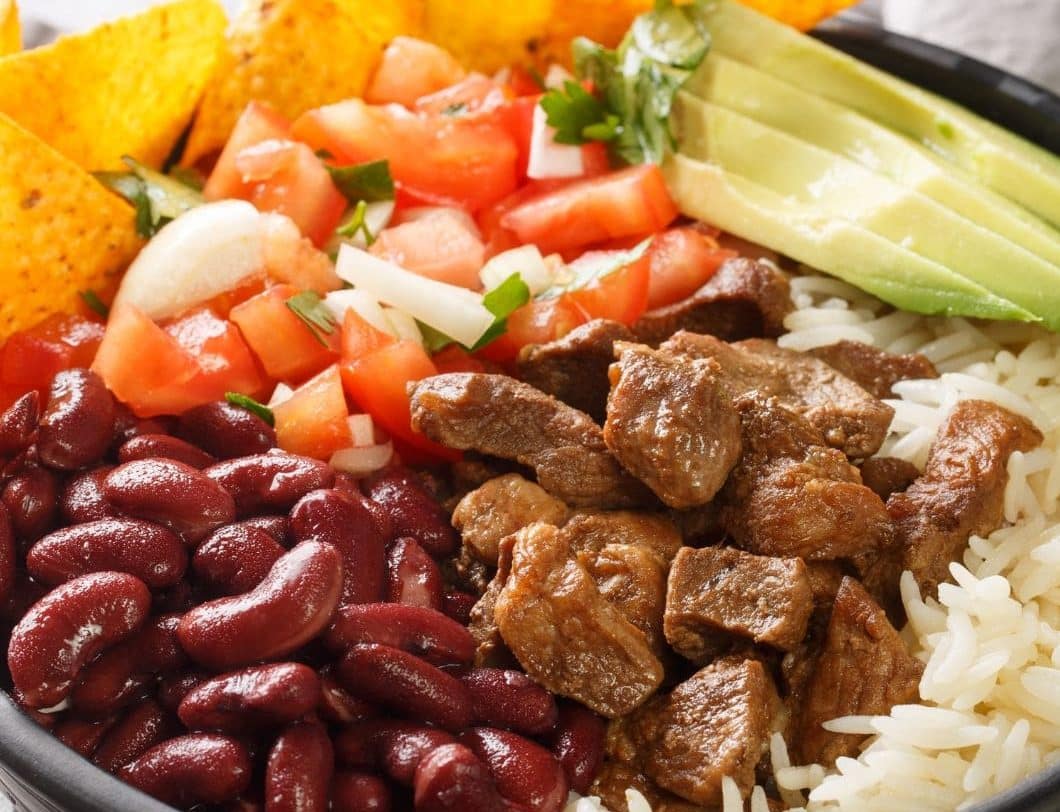Chifrijo is a beloved dish in Costa Rica, often found in local bars and eateries, serving as a delightful mix of textures and flavors that embody the spirit of Costa Rican casual dining. This dish, which has arguably become a national favorite, encapsulates a fusion of ingredients that are simple yet robust in their collective impact.
Origin and Composition
The name ‘Chifrijo’ is a portmanteau, combining the words “chicharrón” (fried pork rinds) and “frijoles” (beans). It was created in the mid-1990s by Miguel Ángel Araya Cordero at his bar in San José, Costa Rica. The idea was to craft a dish that could be enjoyed with a cold beer in a lively atmosphere, and Chifrijo was a perfect fit.
The classic Chifrijo consists of a layer of white rice topped with a generous helping of seasoned black beans. Over this base, chunks of crispy chicharrón are added, along with a fresh salsa made of tomatoes, cilantro, lime juice, and onions, sometimes spiced up with chili peppers. The dish is often completed with a sprinkle of fresh cilantro and served with tortilla chips or avocado slices on the side.
Regional Variations
While Chifrijo is a staple in Costa Rica, variations of the dish can be seen in other Latin American countries, albeit under different names and with regional adaptations. For example, in some parts of Nicaragua and Panama, similar dishes might include local ingredients such as plantains or different types of beans, reflecting local culinary preferences and ingredient availability.
In Costa Rica, however, Chifrijo has a standard form but still allows for some personalization. Some might add a dollop of sour cream or a slice of lime on the side to enhance the flavor. Others might choose to use different cuts of pork or adjust the types of beans used, though black beans remain the most traditional choice.
Costa Rican Twist
What sets the Costa Rican version apart is not just the dish itself but the culture surrounding it. Chifrijo is more than just food; it’s part of a social ritual. It’s commonly consumed in a “boca” style, which means it’s shared among friends or family as a snack during gatherings or while enjoying a drink at a local cantina. This communal aspect is deeply ingrained in its enjoyment, making it a social dish meant to be savored while engaging in lively conversation.
Nutritional Aspects
Nutritionally, Chifrijo can be quite balanced. The beans provide a good source of fiber and protein, while the tomatoes and onions in the salsa add a nutritious punch of vitamins and antioxidants. However, because chicharrón is a fried food, it’s best consumed in moderation due to its high fat content.
Enjoying Chifrijo
If you’re looking to recreate this dish at home, the key is in the preparation of the chicharrón—ensuring it’s perfectly crispy—and in the freshness of the salsa. Pair it with a locally brewed beer for an authentic Costa Rican experience.
Chifrijo is a dish that exemplifies the Pura Vida lifestyle—simple, satisfying, and inherently social. Whether you’re in Costa Rica or trying to bring a taste of it into your kitchen elsewhere, Chifrijo offers a delightful glimpse into the nation’s culinary culture.
This exploration of Chifrijo not only highlights its origins and components but also celebrates its place in Costa Rican culture, making it a dish worth sharing, both in the kitchen and in stories.






